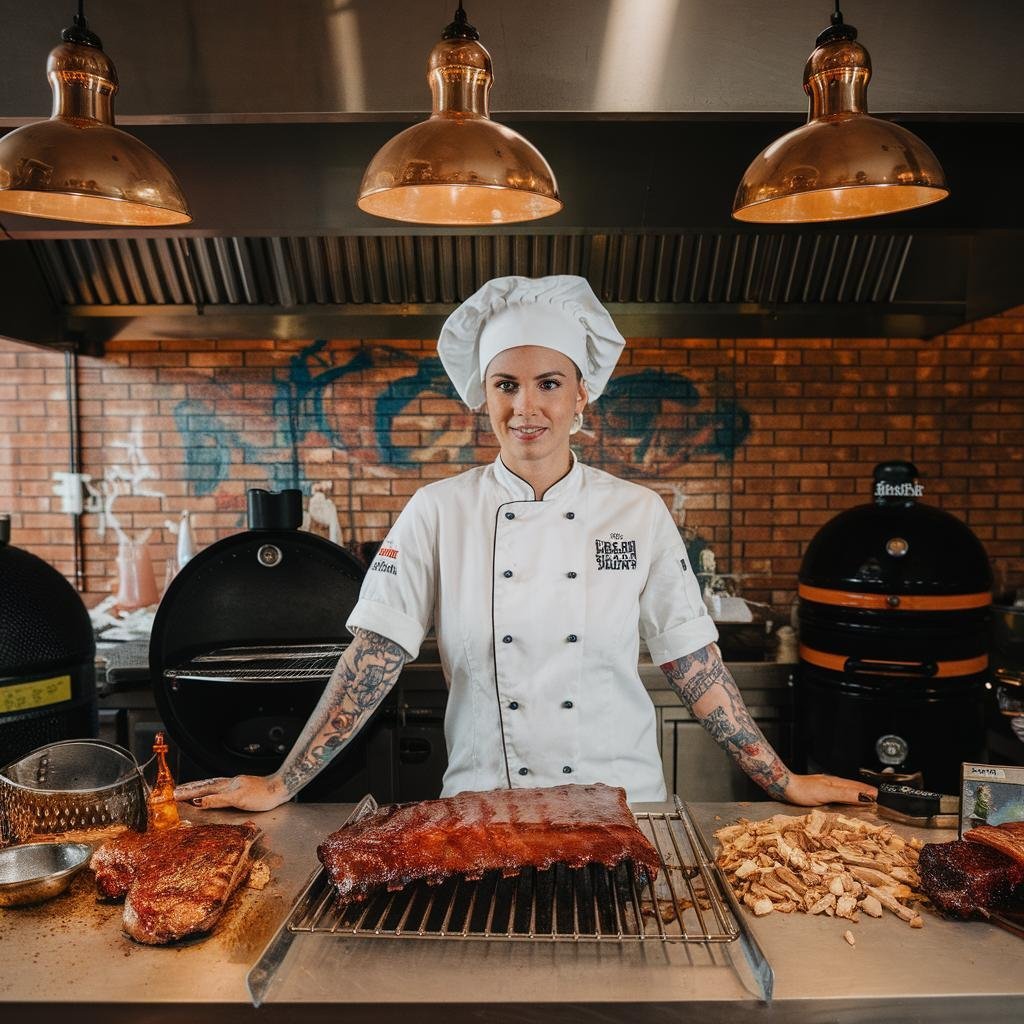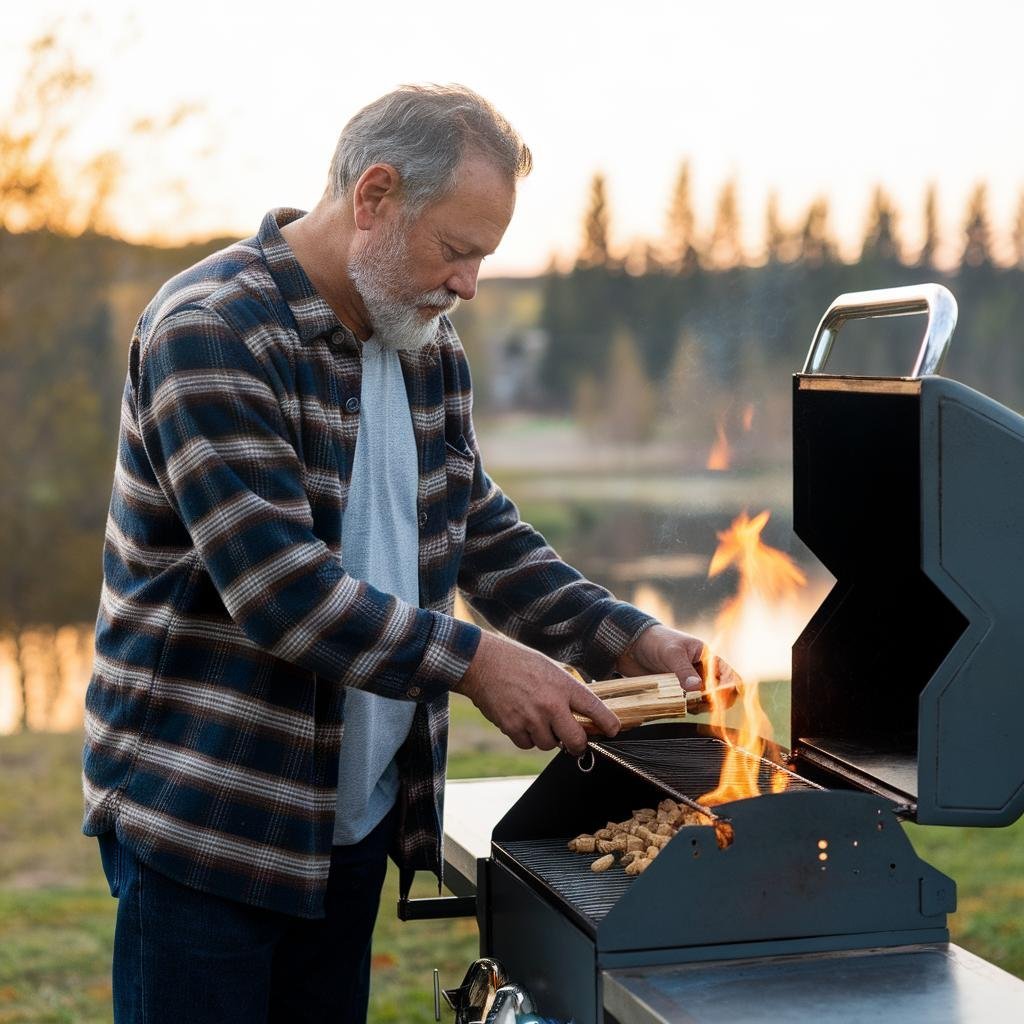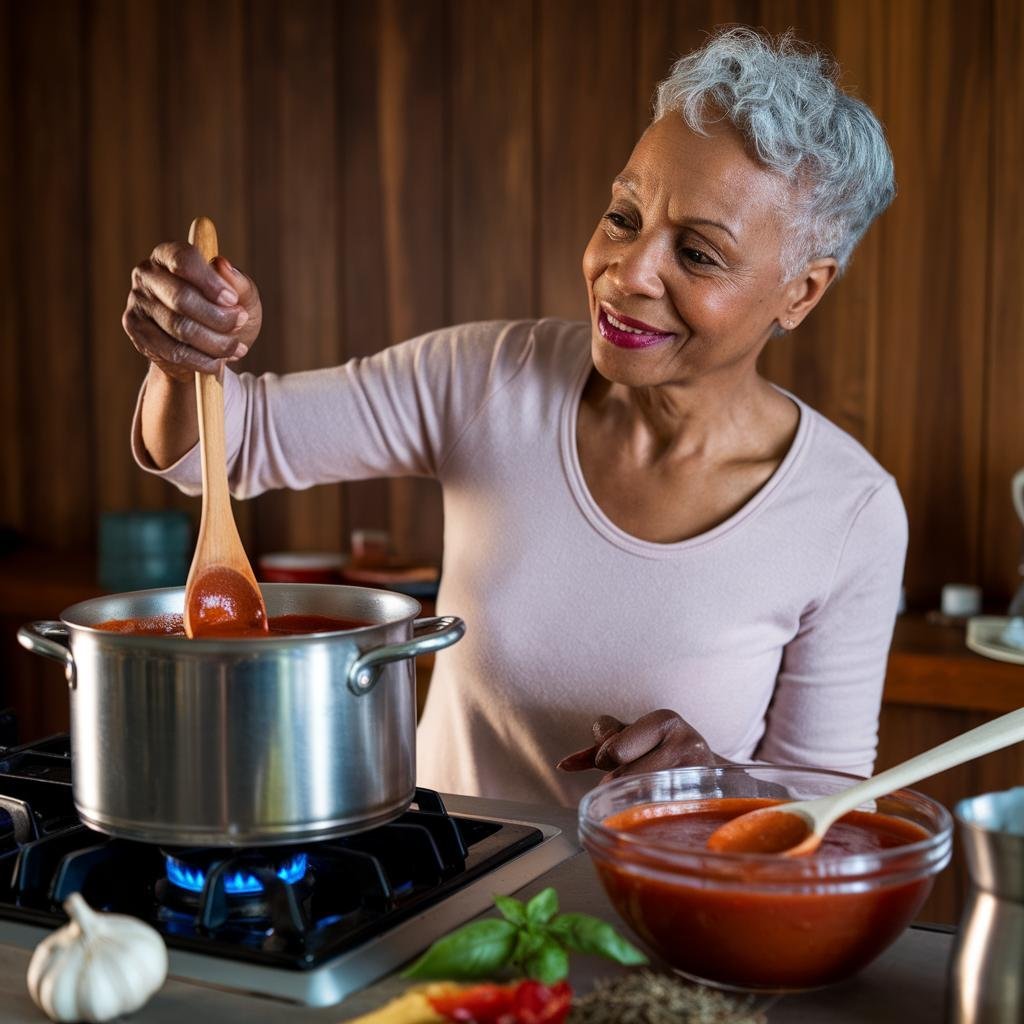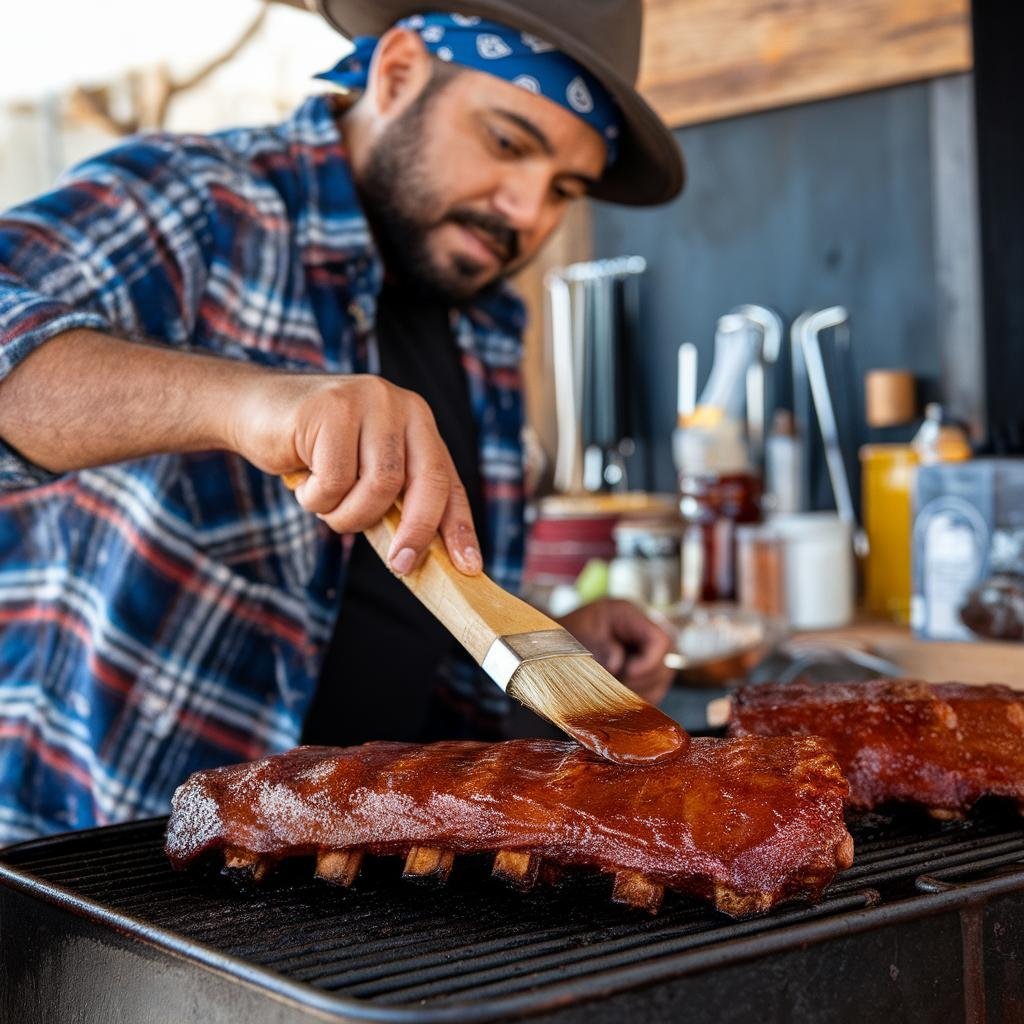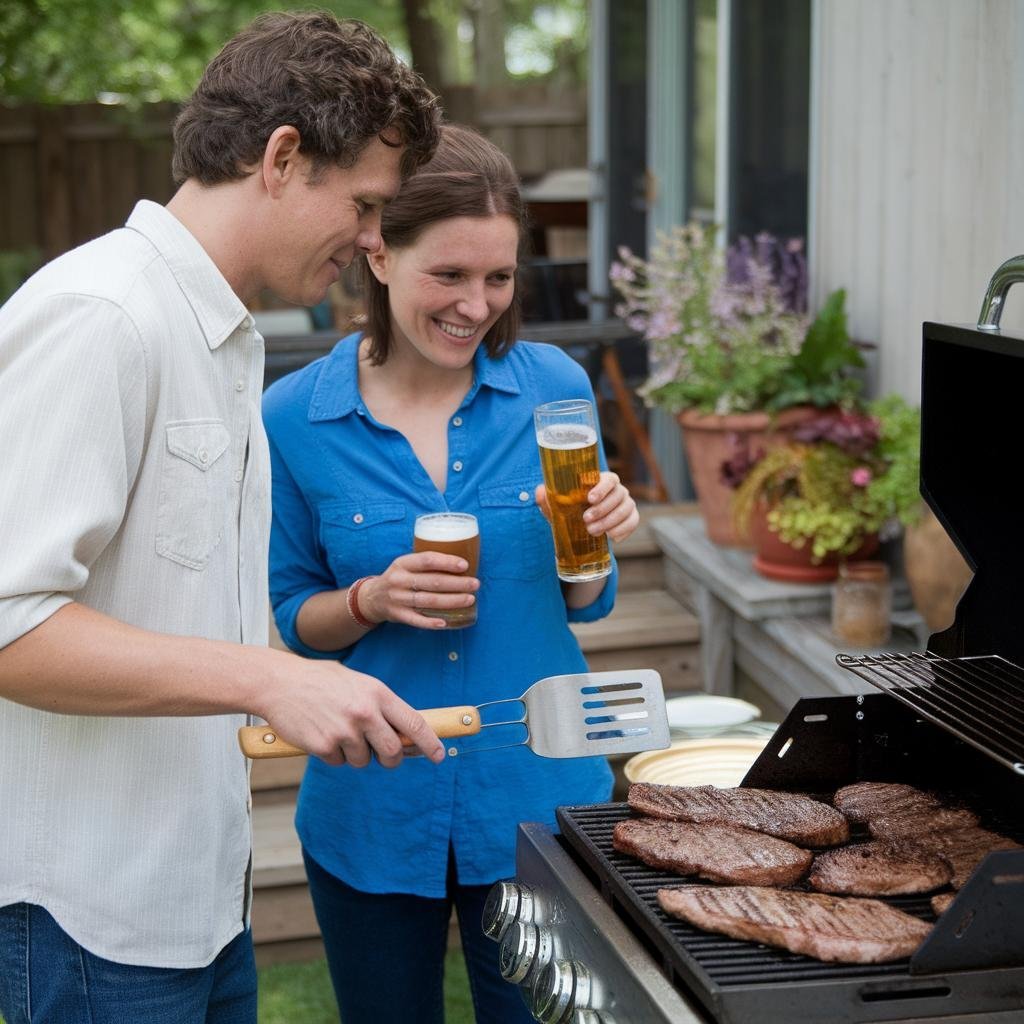Disclosure: This Post Contains Affiliate Links; We earn a commission on purchases.
Achieving the perfect smoke ring is the holy grail for BBQ enthusiasts. That pinkish-red circle that forms around the edges of smoked meat is like a badge of honor, signifying authentic wood fire and incredible taste. But how exactly do the pros achieve that coveted smoke ring? Let’s uncover the secrets and smoking techniques that can help you elevate your BBQ game to the next level.
Key Takeaways:
- Understanding the science behind the smoke ring can help you achieve it consistently.
- The smoke ring is not formed by smoke but by a chemical reaction involving myoglobin.
- Achieving a smoke ring involves factors like using high-nitrogen fuel and keeping the grill at a low temperature.
- Collagen plays a significant role in smoke ring formation and tenderness of the meat.
- Focus on the overall cooking process and not solely on the presence of a smoke ring.
What is the Smoke Ring?
The smoke ring is a fascinating phenomenon that adds an extra layer of magic to the art of smoking meat. It is the product of a unique chemical reaction that takes place during the cooking process. When meat is smoked, the pinkish-red smoke ring forms around the outer edges, creating an eye-catching visual appeal.
To understand the smoke ring formation, let’s delve into the science behind it. The bonding between myoglobin, a protein responsible for meat color, and either carbon monoxide (CO) or nitric oxide (NO) is what creates the smoke ring. These molecules are produced when real wood is burned, giving wood-burning pellet grills an advantage in smoke ring formation.
So why does the smoke ring appear on the outer layers of the meat? It’s because the smoke particles can penetrate only a short distance into the meat, typically less than an inch. As a result, the smoke ring is visible on the surface, acting as a telltale sign of thorough cooking and flavor development.
The smoke ring is not just aesthetically pleasing; it also indicates that the meat has been cooked with care and attention.
While the smoke ring is not the sole indicator of a well-cooked piece of meat, it is undeniably impressive and enhances the overall BBQ experience. Its presence is a testament to the careful balance of temperature, smoke, and cooking time, which all contribute to delivering mouthwatering results.
The Science of the Smoke Ring
The smoke ring is a captivating feature that adds visual appeal to smoked meats. It forms a pinkish-red circle around the edges, enhancing the overall presentation of the dish. However, it is crucial to understand that the smoke ring alone does not guarantee a perfectly cooked or delicious piece of meat. While it does enhance the perceived flavor, achieving a smoke ring requires a combination of factors.
To achieve a smoke ring, several variables come into play. Firstly, using fuel with a high nitrogen content, such as hardwood pellets, can promote the formation of nitric oxide. This chemical reaction contributes to the development of the smoke ring. Additionally, maintaining a low cooking temperature, around 225°F, during the initial stage of smoking allows the meat to absorb nitric oxide more effectively.
However, it is important to note that the presence of a smoke ring does not always signify a superior taste. There have been instances where meat with a prominent smoke ring turned out dry and tough, while meat without a smoke ring was tender and flavorful. Therefore, it is crucial to focus on the overall cooking process and not solely rely on the presence of a smoke ring.
Enhancing the smoke flavor goes beyond the smoke ring itself. It involves factors such as marinating the meat, using quality seasoning, and mastering the cooking technique. By combining these elements, you can achieve not only a visually appealing smoke ring but also a delectable and memorable BBQ experience.
Busting the Myth: The Smoke Ring vs. Meat Quality
“The smoke ring is like a beautiful accessory that complements the meat but does not define its quality or taste.” – BBQ Pro
The smoke ring is a fascinating phenomenon that captivates BBQ enthusiasts. However, it is essential to understand that the smoke ring is not the ultimate indicator of meat quality. The texture, tenderness, and taste of the meat depend on various factors, including the cut, marbling, cooking technique, and seasoning. While the smoke ring adds visual appeal and enhances the perceived flavor, achieving a fantastic BBQ goes beyond the smoke ring itself.
By focusing on gaining a deep understanding of meat quality, selecting the right cuts, and mastering the cooking techniques, you can elevate the overall flavor and tenderness of your BBQ. The smoke ring is just one aspect of the BBQ experience, and perfecting it requires a holistic approach.
Enhancing Smoke Flavor: Tips from the Pros
To enhance the smoke flavor in your BBQ, consider the following tips from seasoned BBQ professionals:
- Choose the right wood for smoking: Different woods impart distinct flavors to the meat. Experiment with different types of wood, such as hickory, mesquite, or fruitwoods, to find the flavor profile that suits your taste.
- Use a quality smoker or grill: Investing in a well-designed smoker or grill can make a significant difference in smoke flavor. Look for models that offer good airflow control and even heat distribution.
- Prepping the meat: Take the time to marinate or season the meat before smoking. This step allows the flavors to penetrate the meat, enhancing the overall taste.
- Low and slow: Cooking at a low temperature for an extended period allows the meat to absorb the maximum amount of smoke, resulting in a bolder flavor.
- Keep it moist: Spritzing the meat with a flavored liquid, such as apple juice or a vinegar-based solution, can help maintain moisture and enhance the smoke flavor.
By incorporating these tips into your BBQ routine, you can take your smoke flavor to the next level and create memorable, mouthwatering dishes that will leave your guests wanting more.
| Factors Impacting Smoke Ring Formation | Effect on Smoke Flavor |
|---|---|
| Fuel with high nitrogen content | Enhances smoke flavor and promotes nitric oxide formation |
| Maintaining a low cooking temperature | Allows better absorption of nitric oxide by the meat, enhancing smoke flavor |
| Marinating or seasoning the meat | Improves overall flavor profile, enhancing smoke flavor |
| Choice of wood for smoking | Imparts distinct flavors to the meat, enhancing smoke flavor |
Tips for Achieving a Great Smoke Ring
When it comes to getting a smoke ring, incorporating the best BBQ practices can make a significant difference. Follow these tips and techniques to increase your chances of achieving a great smoke ring:
- Use pure hardwood pellets as fuel: Hardwood pellets provide a high nitrogen content, which promotes the formation of nitric oxide and enhances the smoke ring. Make sure the wood pellets are dry to ensure proper combustion.
- Keep the grill at a low temperature: Maintaining a grill temperature around 225°F, especially during the first hour of cooking, allows for maximum absorption of nitric oxide by the meat. This helps in developing a rich smoke ring.
- Trim excess fat and avoid highly acidic or salty rubs: Trimming excess fat from the meat helps in exposing more surface area for smoke penetration. Highly acidic or salty rubs can hinder smoke ring formation, so it’s best to avoid them.
- Spritz the meat with apple juice or water: During the cooking process, periodically spritzing the meat with apple juice or water can help keep the surface moist. This promotes the condensation of smoke particles and enhances the appearance of the smoke ring.
Following these tips and techniques can greatly enhance your chances of achieving a beautiful smoke ring, adding both visual appeal and flavor to your BBQ creations.
| Tip | Description |
|---|---|
| Use pure hardwood pellets as fuel | High nitrogen content promotes nitric oxide formation and enhances the smoke ring |
| Keep the grill at a low temperature | Maintain a temperature of around 225°F during the first hour for increased nitric oxide absorption |
| Trim excess fat and avoid acidic or salty rubs | Exposing more surface area and avoiding hindrances can improve smoke ring formation |
| Spritz the meat with apple juice or water | Moisture on the surface promotes condensation of smoke particles, enhancing the smoke ring appearance |
The Role of Collagen in Smoke Ring Formation
Collagen, a type of connective tissue found in meat, plays a significant role in smoke ring appearance. As meat cooks, collagen transforms into gelatin, resulting in tender and succulent meat. This transformation is facilitated by low and slow cooking at temperatures between 160°F and 205°F.
During the cooking process, collagen begins to melt and absorb water, leading to a moist and flavorful end product. Achieving a great smoke ring is closely tied to the proper transformation of collagen. Understanding the importance of collagen and the ideal temperature and cooking time required for its transformation is crucial for getting a great smoke ring and optimal tenderness in your BBQ.
By ensuring your meat is cooked at the right temperature and for the appropriate length of time, you can maximize collagen-to-gelatin conversion and create a delicious, smoke-infused barbecue experience.
Conclusion
Achieving the perfect smoke ring in your BBQ requires a combination of science and technique. While the smoke ring adds visual appeal and enhances the perceived flavor of smoked meat, it is not the sole indicator of a well-cooked or delicious piece of BBQ. Understanding the chemical reactions involved, such as the bonding between myoglobin and carbon monoxide or nitric oxide, can help you achieve consistent results.
By focusing on factors like using high-nitrogen fuel, maintaining a low cooking temperature, and allowing for proper collagen to gelatin transformation, you can enhance the smoke ring appearance and overall quality of your smoked meats. Using pure hardwood pellets as fuel can provide a high nitrogen content, while keeping the grill at a low temperature allows for maximum absorption of nitric oxide by the meat. Trimming excess fat, avoiding highly acidic or salty rubs, and spritzing the meat with apple juice or water can also contribute to achieving a great smoke ring.
Remember, the smoke ring is just one aspect of BBQ cooking, and it does not guarantee a perfectly cooked or delicious piece of meat. Focus on the overall cooking process, ensuring proper tenderness and flavor. By applying these tips and techniques, you can elevate your BBQ game and impress your guests with the perfect smoke ring.
Source Links
- https://www.campchef.com/blog/tips-for-a-better-smoke-ring.html
- https://www.texasmonthly.com/bbq/the-science-of-the-smoke-ring/
- https://www.ethanchlebowski.com/kitchen-reports/qowygc647epm72ovgv59jnuusvh46m

Ryan Conlon is a BBQ enthusiast and inspired chef on a journey through the smoky, savory world of outdoor cooking. Hailing from the heart of the Midwest, Ryan’s passion for grilling ignited during his early years, where family gatherings often revolved around the sizzle of the grill and the aroma of seasoned meats.

